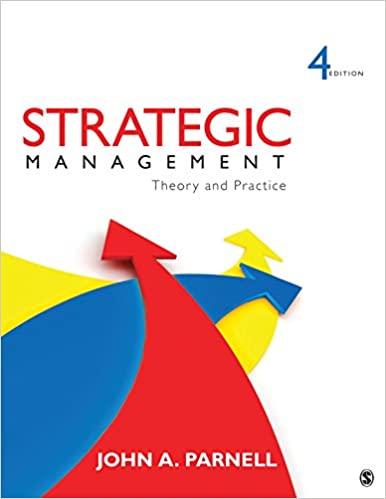In 1994, recent Princeton graduate and Wall Street executive Jeff Bezos left his job, began working out
Question:
In 1994, recent Princeton graduate and Wall Street executive Jeff Bezos left his job, began working out of the garage of his rented home, and raised several million dollars of start-up capital to launch an online retail business. The following year, he opened a 400-square foot office in Bellevue, Washington, and launched Amazon.com, billed as “the world’s largest bookstore.” By 1996, Amazon had become one of the most successful web-based retailers, with revenues of almost $16 million.
In 1997, Bezos took Amazon public and annual sales rose to $147 million. In that same year, Amazon became the sole book retailer on America Online’s (AOL) public website and Netscape’s commercial channel. In 1998, Amazon launched its online music and video stores, began to sell toys and electronics, and expanded its European reach with the acquisition of online booksellers in the United Kingdom and Germany. The company grew at a phenomenal pace in the years that followed.
In 2000, Amazon launched a 10-year partnership with Toysrus.com to co-brand a toy and video game store. In the following year, Amazon cut 15% of its workforce as part of a restructuring plan that also forced a $150 million charge. Amazon also partnered with now defunct Borders in 2001 to manage the rival’s web operation. AOL invested $100 million in Amazon in 2001, and in the fourth quarter of 2001, Amazon showed its first profit. Rapid growth has continued throughout the mid-2000s.
Amazon introduced the Kindle e-reader in 2007 and was selling more Kindle e-books than print books in 2011. The firm also expanded its online reach by engaging in a number of partnerships and by acquiring Zappos.com in 2009 and Quidsi and Woot in 2010. Amazon has grown exponentially, increasing revenues from about $11 billion in 2006 to more than $34 billion in 2010.
Today, Amazon offers a wide variety of products in addition to books, including free electronic greeting cards, online auctions, CDs, videos, DVDs, toys and games, electronics, kitchenware, and computers. The company competes with publishers, distributors, manufacturers and physical-world retailers.
Case Challenges
1. How would you define Amazon’s industry? What difficulties do you encounter identifying primary competitors and key lines of business?
2. There has been a general trend toward “bricks and clicks”—the combination of Internet and traditional retailing outlets. How has Amazon succeeded as an e-tailer without brick-and-mortar operations?
3. Given its Internet base, can Amazon’s success be easily duplicated by copying its web materials? If so, why has Amazon been so dominant in recent years?
4. With myriad websites that offer price comparisons that exist for book and other e-tailers (e.g., www.bestbookbuys.com), is it possible for Amazon to maintain a strong customer base without an extreme emphasis on low prices?
Step by Step Answer:






